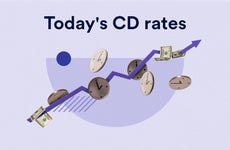
Top CD Rates Today: December 20, 2024 | Lock In Up To 4.65% APY
Explore the top CD rates today and learn how economic trends can affect your rate. Bankrate provides valuable insights to find the best CD products to maximize your savings.
Interested in getting a certificate of deposit? Our daily CD rate updates help you stay informed about the current market's competitive rates and where you can find them.
Offers featured here have been sponsored which impacts how, where, and in what order the products appear. Not all offers are displayed on this page.
These are sponsored offers rated highly by us for competitive rates, fees, and minimums.

APY, or annual percentage yield, is the yearly return on a bank or investment account.
APY, or annual percentage yield, is the yearly return on a bank or investment account.
Bankrate CD rating = 4.9/5
Bankrate scores are objectively determined by our editorial team. Our scoring formula weighs several factors consumers should consider when choosing financial products and services.

APY, or annual percentage yield, is the yearly return on a bank or investment account.
APY, or annual percentage yield, is the yearly return on a bank or investment account.
Bankrate CD rating = 4.9/5
Bankrate scores are objectively determined by our editorial team. Our scoring formula weighs several factors consumers should consider when choosing financial products and services.

APY, or annual percentage yield, is the yearly return on a bank or investment account.
APY, or annual percentage yield, is the yearly return on a bank or investment account.
Offers featured here have been sponsored which impacts how, where, and in what order the products appear. Not all offers are displayed on this page.

Explore the top CD rates today and learn how economic trends can affect your rate. Bankrate provides valuable insights to find the best CD products to maximize your savings.
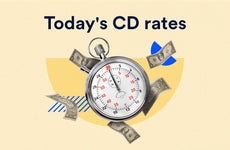
Explore the top CD rates today and learn how economic trends can affect your rate. Bankrate provides valuable insights to find the best CD products to maximize your savings.
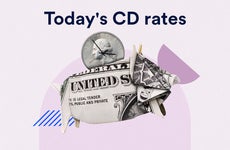
Explore the top CD rates today and learn how economic trends can affect your rate. Bankrate provides valuable insights to find the best CD products to maximize your savings.
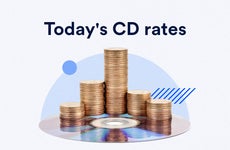
Discover today's top CD rates and gain insights on how economic trends impact your yield with Bankrate's expert analysis of CD products.
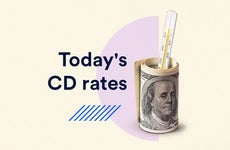
Read up on leading CD rates today and the impact of economic trends on your savings. Bankrate can help you choose the right CD offer to maximize your savings potential.

Discover today's top CD rates and gain insights on how economic trends impact your yield with Bankrate's expert analysis of CD products.

Read up on leading CD rates today and the impact of economic trends on your savings. Bankrate can help you choose the right CD offer to maximize your savings potential.

Read up on leading CD rates today and the impact of economic trends on your savings. Bankrate can help you choose the right CD offer to maximize your savings potential.